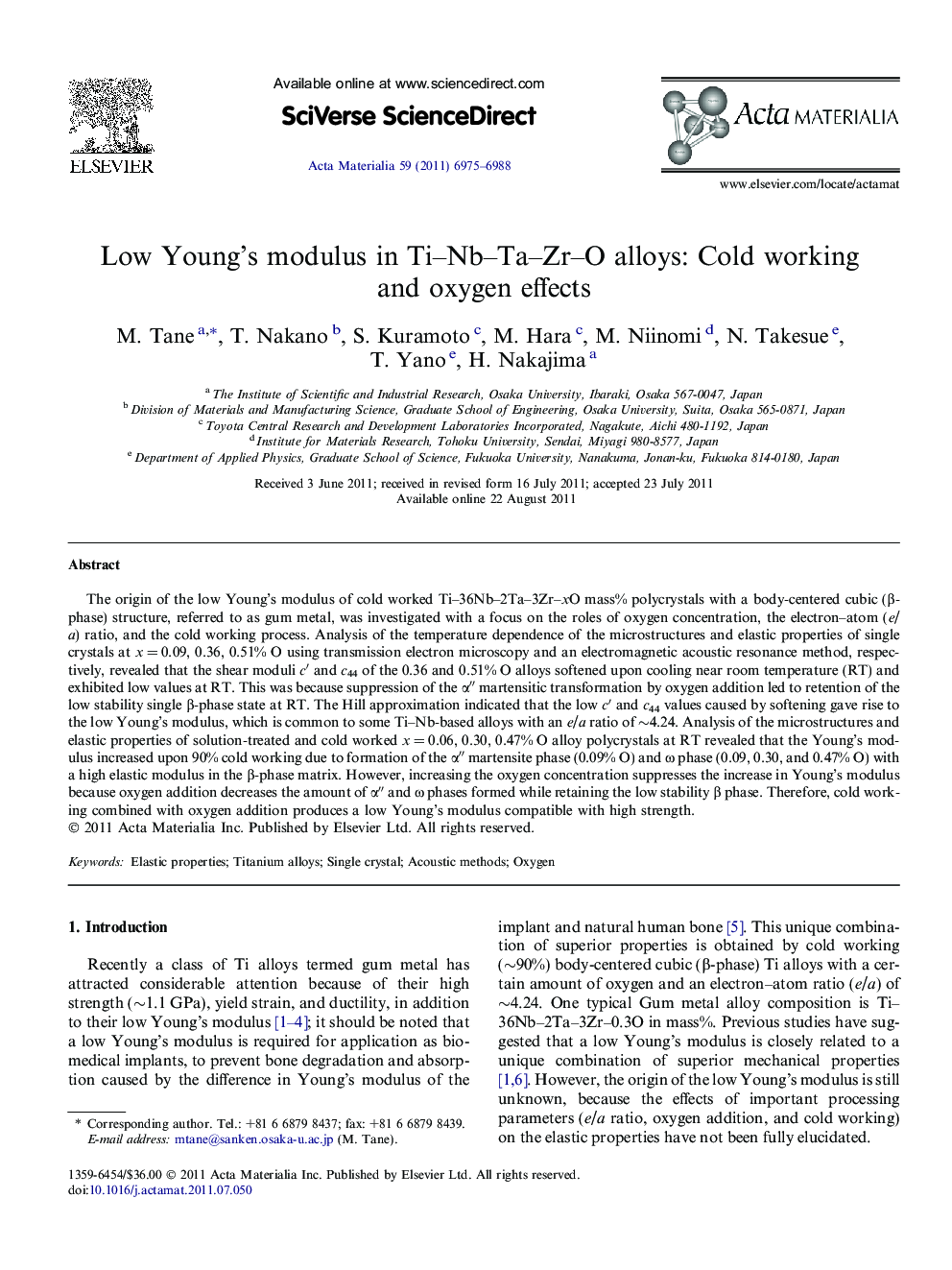| Article ID | Journal | Published Year | Pages | File Type |
|---|---|---|---|---|
| 1447264 | Acta Materialia | 2011 | 14 Pages |
The origin of the low Young’s modulus of cold worked Ti–36Nb–2Ta–3Zr–xO mass% polycrystals with a body-centered cubic (β-phase) structure, referred to as gum metal, was investigated with a focus on the roles of oxygen concentration, the electron–atom (e/a) ratio, and the cold working process. Analysis of the temperature dependence of the microstructures and elastic properties of single crystals at x = 0.09, 0.36, 0.51% O using transmission electron microscopy and an electromagnetic acoustic resonance method, respectively, revealed that the shear moduli c′ and c44 of the 0.36 and 0.51% O alloys softened upon cooling near room temperature (RT) and exhibited low values at RT. This was because suppression of the α″ martensitic transformation by oxygen addition led to retention of the low stability single β-phase state at RT. The Hill approximation indicated that the low c′ and c44 values caused by softening gave rise to the low Young’s modulus, which is common to some Ti–Nb-based alloys with an e/a ratio of ∼4.24. Analysis of the microstructures and elastic properties of solution-treated and cold worked x = 0.06, 0.30, 0.47% O alloy polycrystals at RT revealed that the Young’s modulus increased upon 90% cold working due to formation of the α″ martensite phase (0.09% O) and ω phase (0.09, 0.30, and 0.47% O) with a high elastic modulus in the β-phase matrix. However, increasing the oxygen concentration suppresses the increase in Young’s modulus because oxygen addition decreases the amount of α″ and ω phases formed while retaining the low stability β phase. Therefore, cold working combined with oxygen addition produces a low Young’s modulus compatible with high strength.
